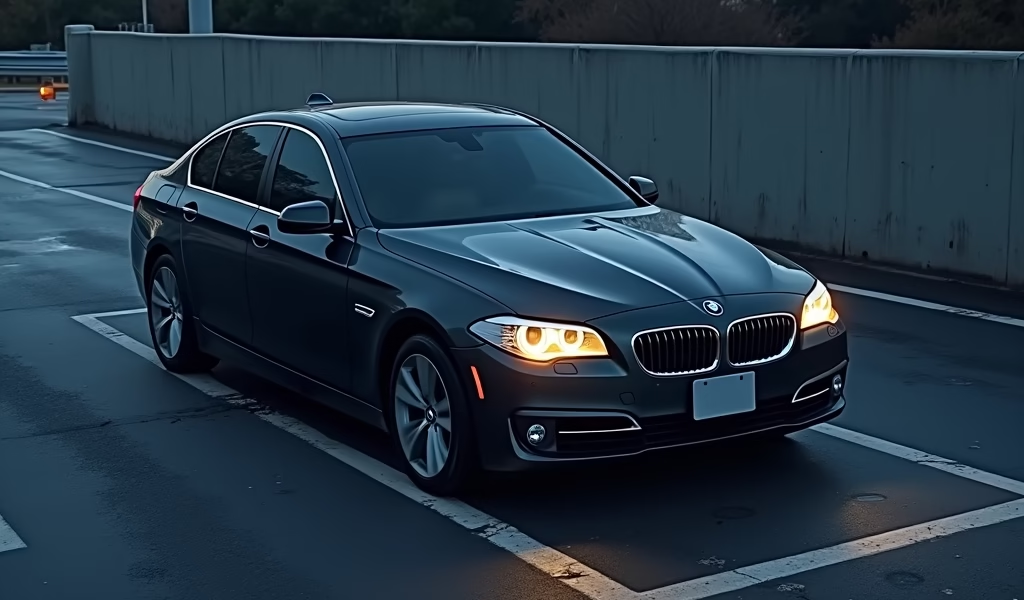Overview
This article provides essential driving tips for automatic transmission vehicles, covering everything from basic PRND operation to advanced techniques for hills, fuel efficiency, and maintenance. It emphasizes smooth, gradual inputs and proper braking habits while explaining various driving modes to help beginners maximize performance and vehicle longevity.
Table of Contents
- Understanding Automatic Transmissions: The Basics
- Getting Familiar With Your Automatic Vehicle
- Tip 1: Mastering the PRND Layout
- Tip 2: Proper Starting and Stopping Techniques
- Tip 3: Braking Habits for Automatic Cars
- Tip 4: Handling Hills and Inclines
- Tip 5: Fuel Efficiency in Automatic Vehicles
- Tip 6: Understanding Different Drive Modes
- Tip 7: Maintenance Tips for Automatic Transmissions
- Conclusion
- Frequently Asked Questions
Understanding Automatic Transmissions: The Basics
Welcome to the world of automatic cars for beginners! As someone who’s spent over two decades under the hood, I’m thrilled to guide you through the seamless experience of driving an automatic vehicle. Think of an automatic transmission as your silent partner on the road – it handles the complex gear-shifting business while you focus on steering, accelerating, and braking.
Unlike manual transmissions where you’re constantly working the clutch and gear stick, automatics do the heavy lifting for you. The transmission uses a sophisticated hydraulic system that senses your speed and engine load, then selects the appropriate gear accordingly. It’s like having a little engineer under your hood making decisions in real-time.
For newcomers, this simplicity is incredibly freeing. You’ll notice the absence of a clutch pedal right away – your left foot gets a well-deserved rest! This design makes automatic cars particularly suitable for city driving with frequent stops and starts, or for those shopping for their first used car. In fact, according to the Bureau of Transportation Statistics, over 96% of new vehicles sold in the US come with automatic transmissions.
Getting Familiar With Your Automatic Vehicle
Before hitting the road, take some time to get acquainted with your automatic vehicle. Sit in the driver’s seat and familiarize yourself with the layout. You’ll notice the gear selector – typically a lever between the front seats or a column shifter near the steering wheel. In newer models, you might find a dial or buttons instead.
The dashboard indicators will show which gear you’re in – P for Park, R for Reverse, N for Neutral, and D for Drive. Many vehicles also offer additional options like S for Sport mode or L for Low gear. Don’t worry about memorizing their functions just yet; we’ll cover each one thoroughly in this guide.
Take a moment to adjust your seat, mirrors, and steering wheel position. Being comfortable is crucial for safe driving. Remember that without a clutch pedal, your left foot should rest on the floor or on the dedicated footrest if your vehicle has one.

Tip 1: Mastering the PRND Layout
Let’s demystify that gear selector! The PRND layout is your command center for controlling your automatic vehicle’s movement direction. Each position serves a specific purpose:
- P (Park): Always use this when the car is stationary and you’re not in the driver’s seat. Park locks the transmission, preventing the car from rolling. Never shift to Park while the vehicle is moving – this can cause serious damage.
- R (Reverse): Engages reverse gear for backing up. Only shift to Reverse when your vehicle is completely stopped.
- N (Neutral): Disconnects the engine from the wheels but doesn’t lock them. Use Neutral when briefly stopped, like at a car wash. Caution: your car can roll freely in Neutral, so always use your brakes!
- D (Drive): Your go-to position for normal forward driving. The transmission automatically shifts through all available forward gears as needed.
Many automatics also include additional settings like:
- S or Sport: Holds gears longer for more responsive acceleration
- L or Low: Keeps the transmission in lower gears for more engine braking or climbing steep hills
- + and -: Manual shift options that let you select gears yourself within certain parameters
Always remember to press and hold the brake pedal when shifting between gears. This safety feature prevents accidental movement and protects your transmission from damage. When you’re ready to drive, move the selector from Park to Drive while keeping your foot on the brake, then release the brake slowly to start moving forward.
Tip 2: Proper Starting and Stopping Techniques
Starting an automatic car follows a simple routine that becomes second nature after a few drives. First, ensure your foot is firmly pressing the brake pedal. Insert your key into the ignition or press the start button (for keyless vehicles). Once the engine comes to life, keep your foot on the brake while shifting from Park to Drive.
When accelerating from a stop, release the brake pedal gently and apply gradual pressure to the accelerator. Automatic transmissions respond best to smooth inputs – jabbing the gas pedal often leads to jerky starts and unnecessarily high RPMs. Think of it as squeezing rather than stomping the pedal.
For stopping, begin braking well in advance of your intended stopping point. As you slow down, the transmission will automatically downshift to lower gears. Come to a complete stop before shifting into Park, and always engage the parking brake – especially on inclines. This good habit takes pressure off the transmission’s parking pawl mechanism, extending its lifespan.
One common mistake beginners make is “riding” the brake – keeping your foot lightly on the brake pedal while driving. This practice wears out your brakes prematurely and confuses drivers behind you with constantly illuminated brake lights. Instead, hover your right foot over the brake when not accelerating, ready to respond when needed.
Tip 3: Braking Habits for Automatic Cars
Developing proper braking habits is crucial for both safety and the longevity of your automatic vehicle. Unlike manual transmissions where engine braking plays a significant role, automatics rely more heavily on the actual braking system. This means your braking technique deserves special attention.
Practice progressive braking – applying light pressure initially, then gradually increasing as needed. This technique not only provides a smoother ride for passengers but also maximizes your control in emergency situations. According to NHTSA research, proper braking technique can significantly reduce stopping distances in critical situations.
When approaching a red light or stop sign, begin slowing down early. This gives the automatic transmission time to downshift properly and reduces wear on your brakes. As you decelerate, you might notice the engine RPMs rising slightly – that’s the transmission downshifting to provide appropriate engine braking.
For extended downhill driving, consider using a lower gear setting (like “L” or “2”) rather than riding your brakes. This leverages engine braking to maintain a safe speed while preventing your brakes from overheating. Modern automatic transmissions are designed to handle this kind of driving without issue, and it can be particularly helpful when towing or carrying heavy loads in affordable family vehicles.
Tip 4: Handling Hills and Inclines
Hills can be intimidating for new drivers, but your automatic transmission offers features to make these challenges more manageable. When stopped on an uphill slope, keep your foot firmly on the brake. When ready to proceed, transition quickly but smoothly from brake to accelerator while giving slightly more gas than you would on flat ground. The transmission will select the appropriate gear to provide the necessary torque.
For steeper climbs, many automatics offer hill-assist features that momentarily hold the brakes after you release the pedal, preventing rollback. If your vehicle lacks this feature, the handbrake technique can help: apply the parking brake while stopped, then release it as you begin to accelerate forward.
When descending steep grades, shift to a lower gear (L, 2, or S depending on your vehicle) before starting downhill. This provides engine braking and prevents your brakes from overheating. Resist the temptation to shift into Neutral on downhills – this dangerous practice eliminates engine braking and can lead to loss of control.
For parking on hills, always turn your wheels appropriately (toward the curb when facing downhill, away from the curb when facing uphill), use your parking brake, and leave the transmission in Park. This triple-safety approach ensures your vehicle stays put, even if one system fails.

Tip 5: Fuel Efficiency in Automatic Vehicles
Modern automatic transmissions have come a long way in terms of fuel efficiency. Today’s automatics often match or even surpass their manual counterparts in economy. However, your driving habits can significantly impact your mileage. The key is anticipation – looking ahead to traffic patterns and adjusting your speed gradually rather than rushing to stops and starts.
Gentle acceleration is your friend when it comes to saving fuel. The transmission shifts up earlier when you accelerate moderately, keeping the engine in its efficiency zone. Hard acceleration forces the transmission to hold lower gears longer, burning more fuel. Think of it as a steady, progressive press rather than flooring the pedal.
Maintain a consistent speed when possible, especially on highways. Constant speed changes force your transmission to shift frequently, consuming more fuel. Many newer car models include cruise control which can help maintain steady speeds on longer journeys.
Be mindful of unnecessary idling. Unlike older automatics that consumed significant fuel at idle, modern transmissions are more efficient – but idling still wastes fuel. If you’ll be stopped for more than 30-60 seconds (except in traffic), consider turning off the engine. However, frequent starting and stopping can wear other components, so use this technique judiciously.
Tip 6: Understanding Different Drive Modes
Many modern automatic vehicles come equipped with multiple driving modes that adapt the transmission’s behavior to different conditions. These modes can dramatically change how your car feels and performs, so understanding them is crucial for mastering your automatic.
- Economy/Eco Mode: Prioritizes fuel efficiency by shifting up earlier and reducing throttle response. Ideal for city driving and commuting.
- Sport Mode: Holds gears longer, sharpens throttle response, and often stiffens the steering for a more engaging drive. Best for winding roads or when you need quick acceleration.
- Winter/Snow Mode: Starts in higher gears and moderates power delivery to prevent wheelspin on slippery surfaces.
- Comfort Mode: Balances performance and comfort with smoother shifts and moderate throttle response. Great for everyday driving.
Some vehicles also offer adaptive or intelligent drive modes that learn your driving style and adjust accordingly. These systems use sensors and algorithms to predict when you’ll need power versus efficiency. According to research from the Society of Automotive Engineers, these adaptive systems can improve fuel economy by 5-10% without sacrificing performance.
Experiment with different modes to understand how they affect your vehicle’s behavior, but always select the appropriate mode for current conditions. Sport mode is fantastic on a clear, dry road but may be hazardous in rain or snow when smoothness is more important than responsiveness.
Tip 7: Maintenance Tips for Automatic Transmissions
Automatic transmissions are remarkably reliable when properly maintained. The cornerstone of transmission longevity is regular fluid checks and changes. Unlike engine oil, transmission fluid doesn’t burn off – but it does degrade over time. Check your owner’s manual for the recommended service interval, typically every 30,000 to 60,000 miles.
The fluid should be bright red and smell slightly sweet. If it’s dark, has a burnt smell, or contains particles, it’s time for a change. Some newer vehicles have “lifetime” transmission fluid, but most mechanics still recommend changes every 60,000-100,000 miles for maximum longevity.
Pay attention to warning signs that might indicate transmission issues: delayed engagement when shifting from Park to Drive, slipping (when engine RPMs rise but speed doesn’t increase proportionally), rough shifts, unusual noises, or warning lights. Addressing these symptoms early can prevent costly repairs down the road.
Avoid towing beyond your vehicle’s rated capacity, which puts tremendous stress on the transmission. If your vehicle isn’t specifically rated for towing, consider renting a proper tow vehicle instead. Similarly, “rocking” an automatic vehicle to escape snow or mud should be done carefully and briefly to avoid overheating the transmission.
Conclusion
Mastering an automatic car offers a blend of convenience, comfort, and control that makes driving both accessible and enjoyable. By understanding the fundamentals we’ve covered – from the basic PRND layout to advanced driving modes and maintenance considerations – you’re well on your way to becoming a confident, skilled driver of automatic vehicles.
Remember that smooth, gradual inputs are almost always better than sudden, jerky movements. Your automatic transmission is designed to respond to subtle changes in pressure and vehicle conditions, working best when given time to select the optimal gear for each situation.
Practice these techniques in a safe environment until they become second nature. Before long, you’ll navigate traffic, hills, and various driving conditions with ease, all while maximizing fuel efficiency and extending the life of your vehicle.
The journey to becoming comfortable with automatic cars is relatively short compared to mastering manual transmissions – one of the many advantages that make automatics so popular for beginners and experienced drivers alike. Enjoy the ride, and remember that every mile brings new opportunities to refine your skills!
Frequently Asked Questions
What’s the biggest difference between driving an automatic and a manual car?
Automatic cars don’t require manual gear shifting or clutch operation. This simplification reduces the driver’s workload and makes stop-and-go traffic much easier to navigate.
Should I put my automatic car in Neutral at traffic lights?
It’s generally unnecessary to shift to Neutral at traffic lights. Modern automatics are designed to idle efficiently in Drive with minimal wear when your foot is on the brake.
Can I still engine brake in an automatic car?
Yes, by shifting to a lower gear setting (S, L, 2, etc.) when descending hills. This provides engine braking similar to manual cars, helping maintain control and reducing brake wear.
Will driving an automatic make me a lazy driver?
Not at all—it simply allows you to focus more on road awareness, defensive driving, and traffic conditions. Many professional drivers prefer automatics for precisely this reason.
How do I know if my automatic transmission needs service?
Watch for warning signs like delayed engagement, rough shifting, unusual noises, or fluid that’s dark or burnt-smelling. Regular fluid checks according to your owner’s manual are the best preventative measure.


Pingback: Manual Cars Pros and Cons: 7 Proven Tips - knowsyourcar.com